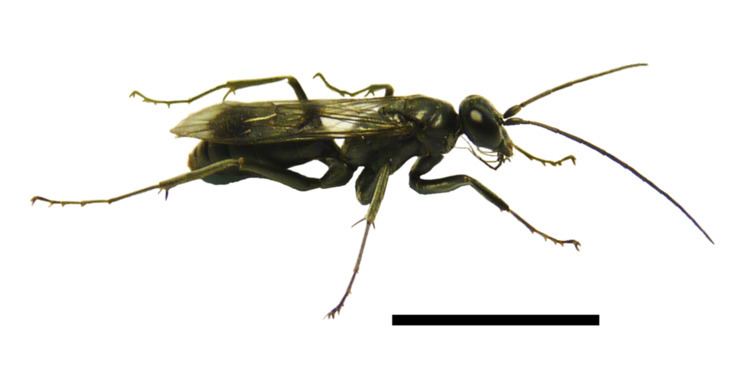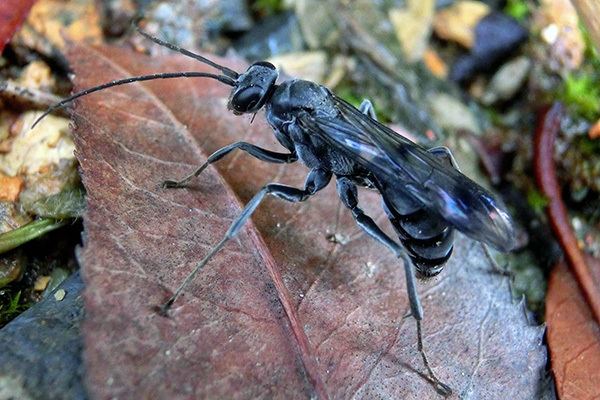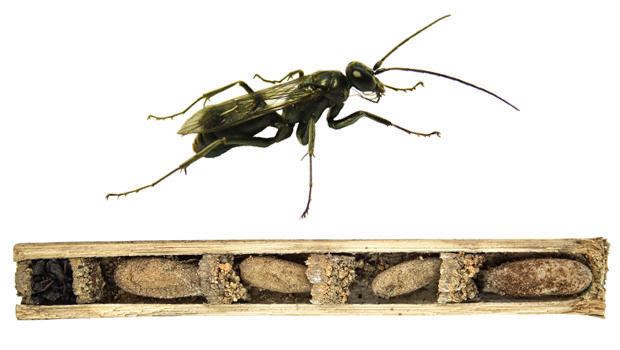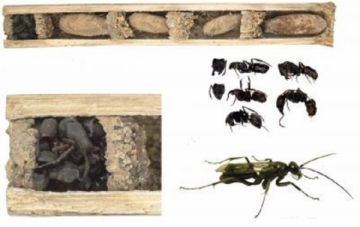Genus Deuteragenia Order Hymenopterans | Family Pompilidae Scientific name Deuteragenia ossarium Rank Species | |
 | ||
Similar Phyllodesmium acanthorhinum, Balanophora coralliformis, Phryganistria tamdaoensis, Cebrennus rechenbergi, Tillandsia religiosa | ||
Deuteragenia ossarium top 6 facts
Deuteragenia ossarium, the Bone-house Wasp, is a species of pompilid wasp discovered in south-east China in 2014. It was named after graveyard bone-houses or ossuaries, from its characteristic use of a vestibular cell filled with dead ants which is built by the female wasp to close the nest after she lays her eggs.

This technique is theorized to make the species' nests less vulnerable to predatory enemies than nests of other sympatric trap-nesting wasps, possibly by utilizing chemical cues in odors from the dead ants to camouflage the nest from predators, or repel them.

The ant most frequently found in the vestibular cell was Pachycondyla astuta, an aggressive species with a potent sting. D. ossarium parasitism rates were significantly lower than other cavity-nesting wasp species.

In 2015, the International Institute for Species Exploration names it as "Top 10 New Species" for new species discovered in 2014.

